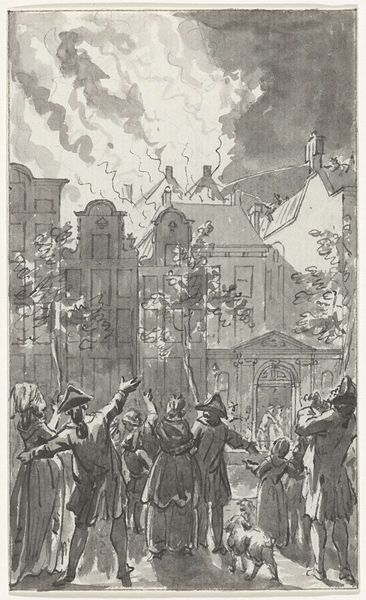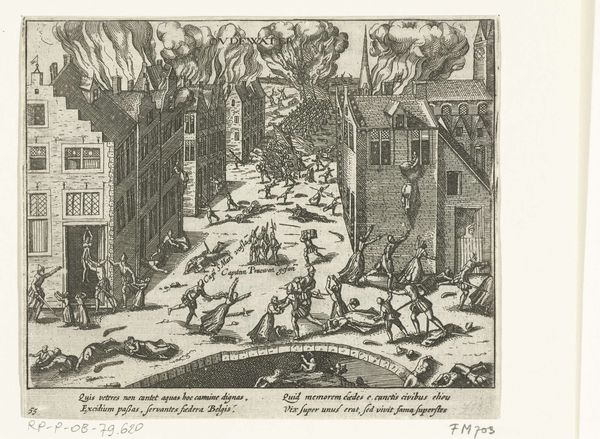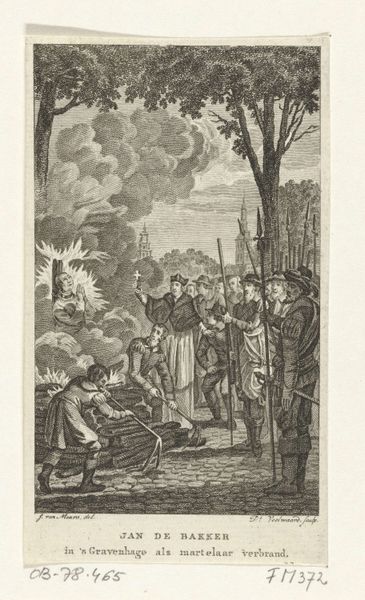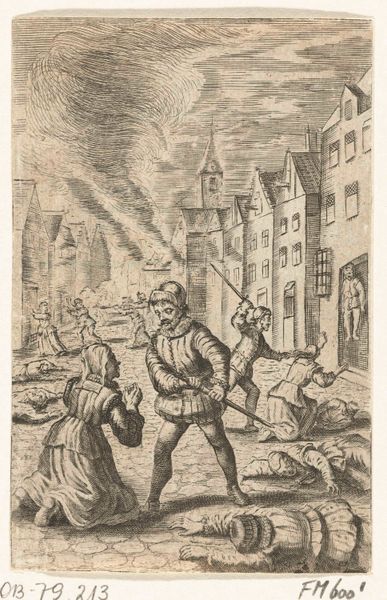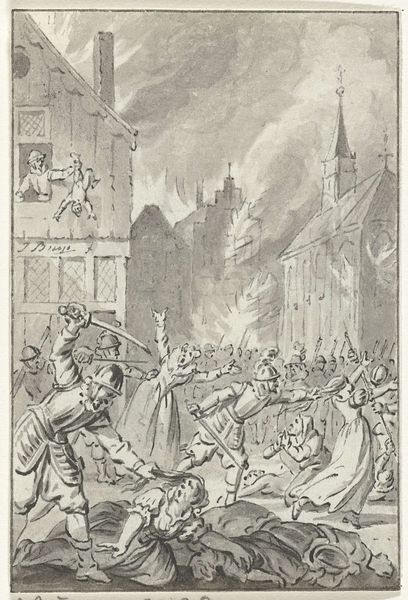
drawing, ink, engraving
#
drawing
#
narrative-art
#
mechanical pen drawing
#
old engraving style
#
landscape
#
ink
#
history-painting
#
engraving
Dimensions: height 89 mm, width 42 mm
Copyright: Rijks Museum: Open Domain
Simon Fokke created this etching, “Brand te Jisp, 1664,” sometime between 1712 and 1784. The process of etching begins with a metal plate, typically copper or zinc, coated with a waxy, acid-resistant material called ground. The artist scratches an image into the ground, exposing the metal beneath. The plate is then immersed in acid, which bites into the exposed lines, creating grooves. The longer the plate remains in the acid, the deeper the lines become. After removing the ground, the plate is inked, and the surface wiped clean, leaving ink only in the etched lines. Finally, the plate is pressed onto paper, transferring the image. This printmaking method allowed for the relatively quick reproduction of images, making them accessible to a wider audience. This etching gives us a glimpse into a devastating event, the burning of Jisp, immortalized through the skilled hand and mechanical process of printmaking. It highlights the relationship between human experience, skilled labor, and the democratization of information.
Comments
No comments
Be the first to comment and join the conversation on the ultimate creative platform.



